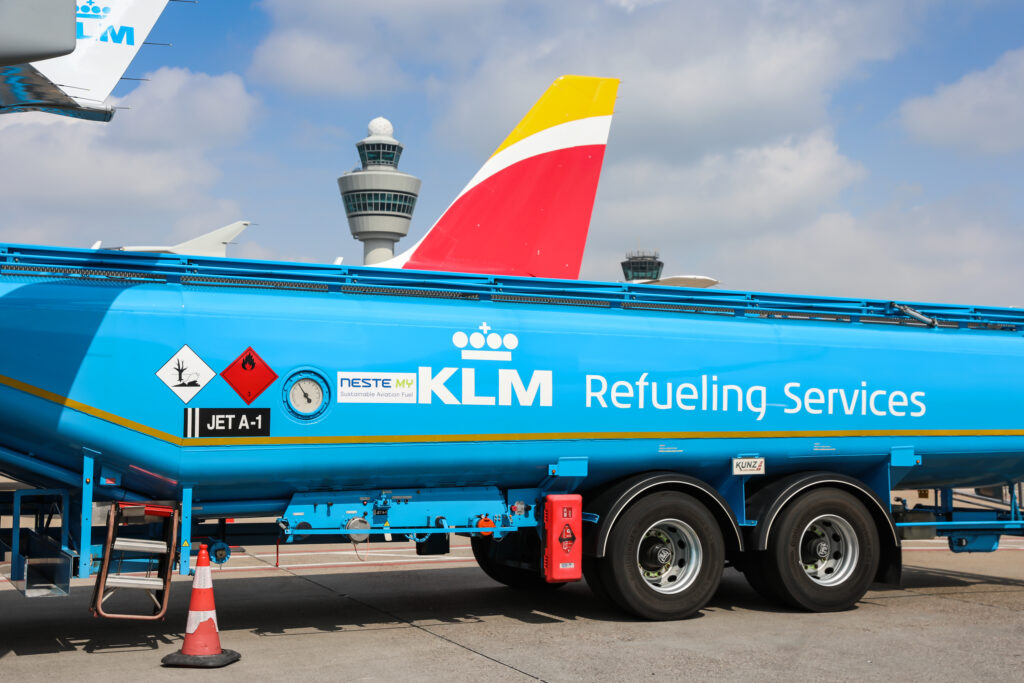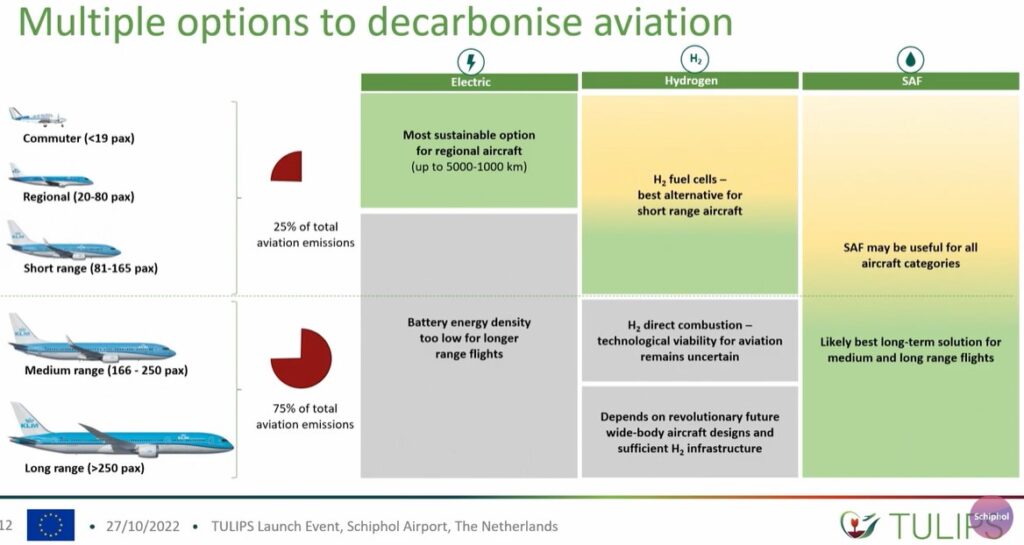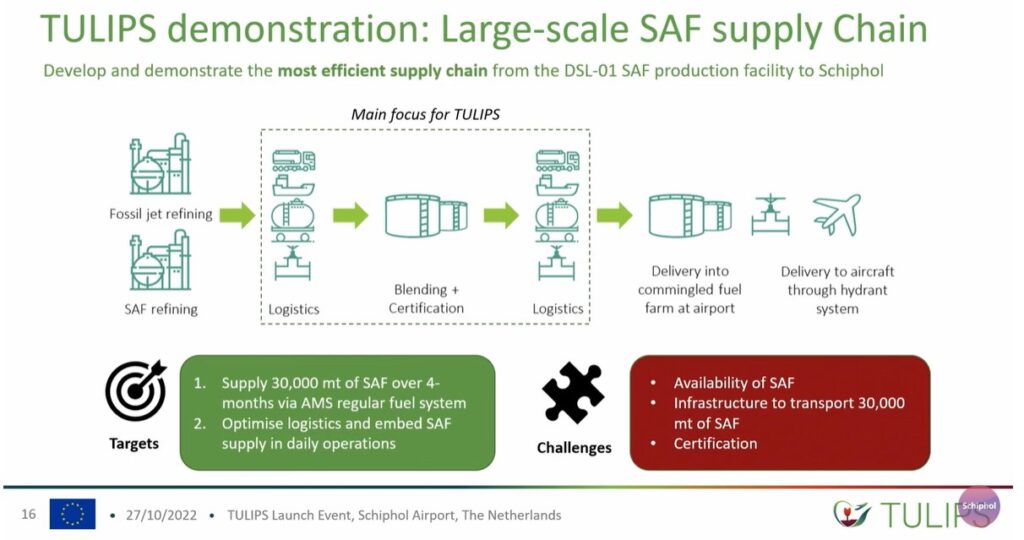March 2023
SAF or Sustainable Aviation Fuel will play an important role in making aviation more sustainable, for the short- and long term. That was one of the main conclusions of the Greener Flight session during the TULIPS launch event last year. We received quite a lot of questions however that we couldn’t answer in the available time. Questions like, what makes sustainable aviation fuel sustainable? Does SAF require fewer adaptations to infrastructure? And how can we scale up the supply? We promised to come back to you and so we’re addressing them here.

What’s sustainable about Sustainable Aviation Fuel
TULIPS expects SAF to play an indispensable part in reaching aviation’s 2050 target for net zero emissions. Compared to flying on electricity and hydrogen, SAF is simply the most practical and most available solution for the short term and long term. We distinguish three types of SAF: biofuels made of feedstock (e.g. waste cooking oils), biofuels made of waste (e.g. municipal solid waste) and synthetic fuels. Compared to fossil kerosine, biofuels are more sustainable. Not because they reduce tailpipe emissions, but because they reduce CO2 life cycle emissions, varying from 65% to 90%, depending on the feedstock and production process. With synthetic kerosine we can ultimately even close the carbon cycle. It is made of CO2 captured from the air, water and green electricity.

The advantages of SAF
The advantage of SAF is that it can be used by current day airplanes. It is very similar to and can be blended with conventional fossil kerosine. Therefore, the airport infrastructure and the airplanes can be used without any adaptations. The same goes for airport safety protocols. Airports like Schiphol already offer the possibility to tank SAF and Schiphol’s home carrier KLM blends 1 percent SAF for each flight. Recently Ryanair announced it will even blend 40% SAF for all their flights from Schiphol. Besides the drastic reduction of carbon emissions during the production life cycle, also local emissions at the airports will improve. The SAF are advanced clean fuels without additives such as aromatics and sulphur. Therefore, fewer particulate matters are emitted.
Scaling up SAF
The big challenge is that SAF is three to five times more expensive than fossil kerosine. That is partly due to the limited supply of SAF and current SAF feedstocks. To scale up SAF, demand has to increase and the availability of advanced feedstocks. Policy will help, especially the EU blending mandate. It requires airlines to blend 2% SAF in 2025, increasing the percentage every year until 70% in 2050. Part of it has to be synthetic kerosine by then. This makes it less risky for companies to invest in new factories. You as a passenger can also help in increasing demand for SAF. That’s why the TULIPS programme is investigating in SAF incentives for travellers. Travellers who are willing to pay extra to fly on SAF also contribute to decarbonising aviation.
Do you have more SAF questions?
Next time we will tackle some more of your questions on Sustainable Aviation Fuel and dive a little deeper. Do you have additional questions on SAF? Please let us know via tulips@schiphol.nl.
You can still watch the recording of the Greener flight session on the TULIPS website.

